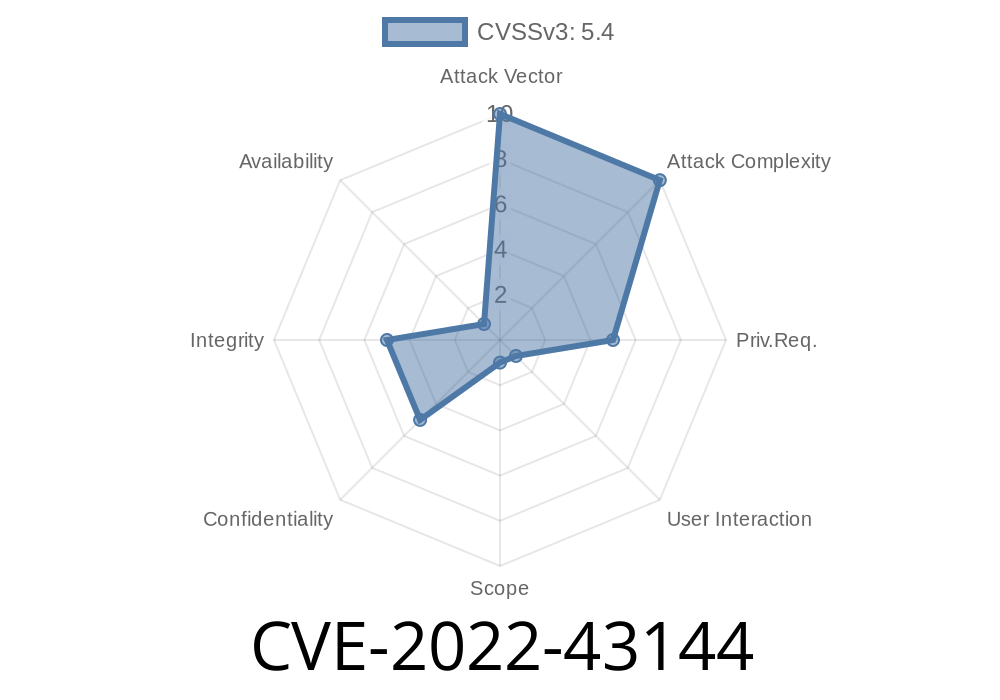Introduction
The purpose of this post is to provide an in-depth analysis of the cross-site scripting (XSS) vulnerability found in Canteen Management System v1., which has been assigned the Common Vulnerabilities and Exposures (CVE) ID CVE-2022-43144. Attackers can exploit this vulnerability by injecting malicious web scripts or HTML code through a crafted payload, which can lead to potential security risks such as data theft, session hijacking, or defacement of the affected website. The post includes the code snippet showcasing the vulnerability, links to original references, and detailed information about the exploit.
Background
Canteen Management System (CMS) v1. is a web-based application designed to help organizations manage their canteen operations more effectively. Since the software deals with sensitive data, it's crucial to ensure its security. The XSS vulnerability in CMS v1., identified as CVE-2022-43144, allows an attacker to insert and execute arbitrary web scripts or HTML in the system, posing a serious security threat.
Code Snippet
The vulnerability exists in the search functionality of the Canteen Management System. The affected code snippet is shown below:
<!-- Search function in 'search.php' -->
<form action="" method="post">
<input type="text" name="search" placeholder="Search...">
<input type="submit" value="Submit">
</form>
<!-- Display search results in 'search.php' -->
<?php
if (isset($_POST['search'])) {
$search = $_POST['search'];
// Query to search for matching records
$sql = "SELECT * FROM products WHERE pname LIKE '%$search%'";
$result = mysqli_query($conn, $sql);
while ($row = mysqli_fetch_assoc($result)) {
echo "<div class='result'>";
echo "<h3>".$row['pname']."</h3>";
echo "</div>";
}
}
?>
As seen in the code snippet above, the search parameter is not sanitized before being used in the SQL query. Consequently, this vulnerability allows an attacker to inject and execute arbitrary web scripts or HTML code in the system.
Exploit Details
To exploit the XSS vulnerability, an attacker can craft a payload containing malicious web scripts or HTML code. For instance, the following payload can be used to inject a simple JavaScript alert box:
<script>alert('XSS Vulnerability Exploit');</script>
When an unsuspecting user enters this payload into the search field and submits it, the malicious JavaScript code will be executed, demonstrating the XSS vulnerability in action.
Mitigations and Recommendations
To mitigate the security risks associated with the CVE-2022-43144 vulnerability, developers can implement the following recommendations:
1. Input Validation: Ensure that all user inputs are properly validated and sanitized before processing. This includes using functions like htmlspecialchars() and stripslashes() in PHP to escape and remove potentially harmful characters.
2. Content Security Policy (CSP): Implement a robust Content Security Policy to prevent the execution of unauthorized scripts in the application.
3. Regular Security Updates: Keep the software and underlying technologies up-to-date with the latest security patches and enhancements.
For more information on the CVE-2022-43144 vulnerability, you may refer to the following resources
1. CVE Details: CVE-2022-43144
2. National Vulnerability Database: CVE-2022-43144
3. Exploit Database: CVE-2022-43144
Conclusion
Understanding XSS vulnerabilities like CVE-2022-43144 is crucial for web application developers and security professionals alike. By taking preventive measures and implementing proper security practices, organizations can protect their applications and sensitive data from potential security threats. Stay cautious, and ensure your applications are secure.
Timeline
Published on: 11/08/2022 23:15:00 UTC
Last modified on: 11/09/2022 17:27:00 UTC
